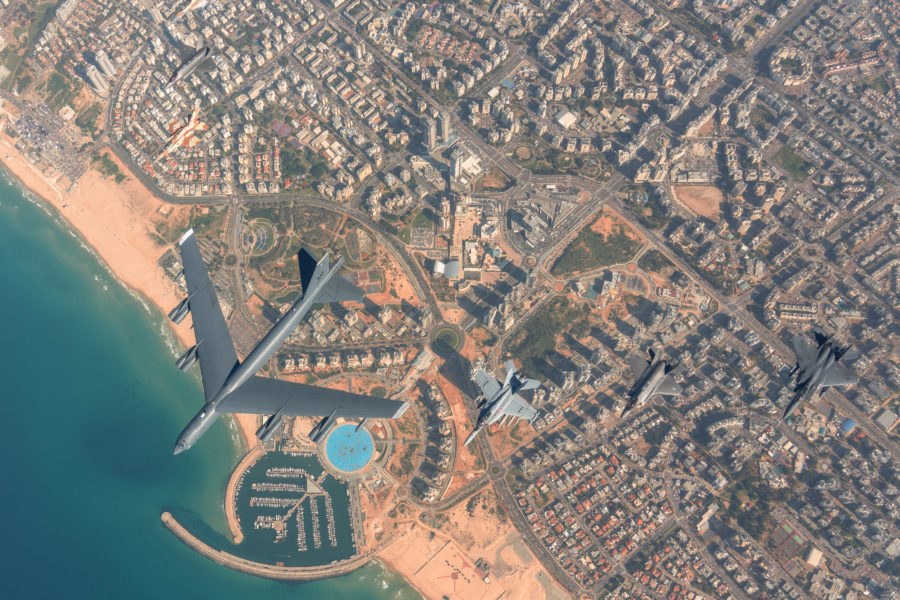The recently-concluded Juniper Oak, an “all domain” exercise carried out from Jan. 23-26, was the “largest U.S.-Israel partnered exercise in history,” according to U.S. Central Command. The exercise was intended to demonstrate that the U.S. can rapidly deploy massive firepower to the region even as it shifts its focus away from the Middle East and towards the Pacific and Europe. Photos and videos recently released by the Department of Defense show the scale of the operation.
The complex exercise included integrated bomber and fighter missions, naval operations involving the George H.W. Bush carrier strike group, combat search and recuse, precision long-range artillery, combat search and rescue, close air support, and Space Force assets.
Israel is a recent partner for CENTCOM, formally becoming part of the command’s area of responsibility in 2021.
“We’re working side-by-side with our Israeli counterparts here and really with other regional partners over the longer term that’s going to make sure we can defend our forces,” Lt. Gen. Alexus G. Grynkewich, the head of Air Forces Central, said in a DOD video promoting the exercise. “It’s really part of integrating CENTCOM into the AOR and building that partnership in depth and breadth.”
All told, 142 U.S. and Israel aircraft directly participated in the exercise.
Four American F-35 Lightning IIs joined six Israeli F-35s, in a rare appearance of Air Force F-35s in the region—the U.S. sometimes sends fifth-generation F-22 Raptors to CENTCOM to quickly respond to contingencies.
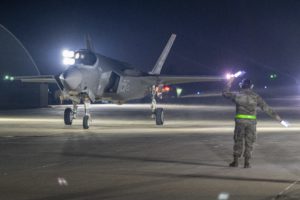
A U.S. Air Force Airman guides an U.S. Air Force F-35A Lightning II after it landed at Nevatim Airbase, Israel, Jan. 23, 2023. Juniper Oak is a large-scale bilateral multi-domain exercise aimed to enhance interoperability between U.S. and Israeli armed forces contributing to integrated regional security. (U.S. Air Force photo by Senior Airman Jackson Manske)
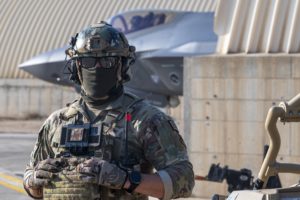
U.S. Air Force Master Sgt. Luke Wagner, a flight chief assigned to the 379th Expeditionary Security Forces Squadron, maintains security at the aircraft hangars at Nevatim Airbase, Israel, during Juniper Oak, Jan. 24, 2023. Juniper Oak is a large-scale bilateral multi-domain exercise aimed to enhance interoperability between U.S. and Israeli armed forces contributing to integrated regional security. (U.S. Air Force photo by Senior Airman Jackson Manske)
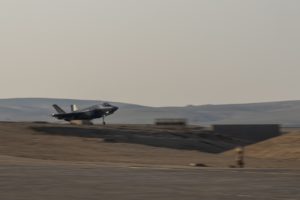
A U.S. Air Force F-35A Lightning II assigned to the 495th Fighter Squadron, lands at Nevatim Airbase, Israel, Jan. 24, 2023, during Juniper Oak. Juniper Oak is a large-scale bilateral multi-domain exercise aimed to enhance interoperability between U.S. and Israeli armed forces contributing to integrated regional security. (U.S. Air Force photo by Senior Airman Jackson Manske)
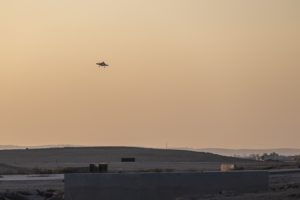
A U.S. Air Force F-35A Lightning II assigned to the 495th Fighter Squadron, soars over Nevatim Airbase, Israel, Jan. 24, 2023, during Juniper Oak. Juniper Oak is a large-scale bilateral multi-domain exercise aimed to enhance interoperability between U.S. and Israeli armed forces contributing to integrated regional security. (U.S. Air Force photo by Senior Airman Jackson Manske)
The exercise also included a large bomber presence—the U.S. has conducted Bomber Task Force missions in the region, most recently in November. Juniper Oak included four B-52s, twice as many as a typical Bomber Task Force mission, and involved aircraft from both B-52 bases: Minot Air Force Base, N.D. and Barksdale Air Force Base, La.
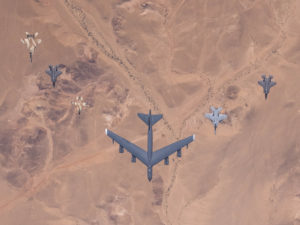
Juniper Oak 23-2 is a bilateral military exercise designed to enhance interoperability between the U.S. and Israel militaries. Photo courtesy of the IDF Spokesperson’s Office
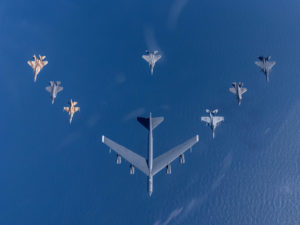
Juniper Oak 23-2 is a bilateral military exercise designed to enhance interoperability between the U.S. and Israel militaries. Photo courtesy of the IDF Spokesperson’s Office
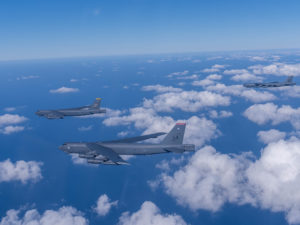
Juniper Oak 23-2 is a bilateral military exercise designed to enhance interoperability between the U.S. and Israel militaries. Forces from U.S. Central Command (USCENTCOM) components and the Israeli Defense Force (IDF) will participate. While this is the first iteration of Juniper Oak, it joins the long-standing “Juniper” series that the U.S. and Israel have conducted for more than 20-years. (Photo courtesy of the IDF Spokesperson’s Office)
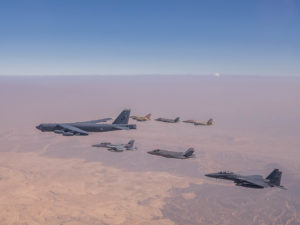
Juniper Oak 23-2 is a bilateral military exercise designed to enhance interoperability between the U.S. and Israel militaries. Forces from U.S. Central Command (USCENTCOM) components and the Israeli Defense Force (IDF) will participate. While this is the first iteration of Juniper Oak, it joins the long-standing “Juniper” series that the U.S. and Israel have conducted for more than 20-years. (Photo courtesy of the IDF Spokesperson’s Office)
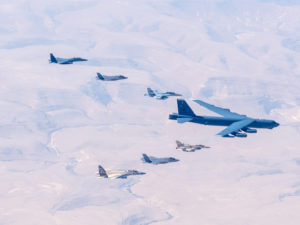
Juniper Oak 23-2 is a bilateral military exercise designed to enhance interoperability between the U.S. and Israel militaries. Forces from U.S. Central Command (USCENTCOM) components and the Israeli Defense Force (IDF) will participate. While this is the first iteration of Juniper Oak, it joins the long-standing “Juniper” series that the U.S. and Israel have conducted for more than 20-years. (Photo courtesy of the IDF Spokesperson’s Office)
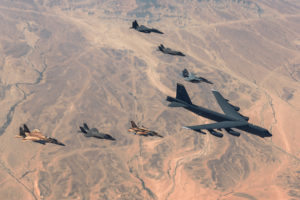
Juniper Oak 23-2 is a bilateral military exercise designed to enhance interoperability between the U.S. and Israel militaries. Forces from U.S. Central Command (USCENTCOM) components and the Israeli Defense Force (IDF) will participate. While this is the first iteration of Juniper Oak, it joins the long-standing “Juniper” series that the U.S. and Israel have conducted for more than 20-years. (Photo courtesy of the IDF Spokesperson’s Office)
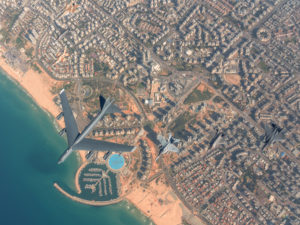
Juniper Oak 23-2 is a bilateral military exercise designed to enhance interoperability between the U.S. and Israel militaries. Forces from U.S. Central Command (USCENTCOM) components and the Israeli Defense Force (IDF) will participate. While this is the first iteration of Juniper Oak, it joins the long-standing “Juniper” series that the U.S. and Israel have conducted for more than 20-years. Photo courtesy of the IDF Spokesperson’s Office
Air Force Special Operations Command joined in the efforts with an AC-130 gunship, which conducted live-fire drills.
Air Forces Central also provided logistical support with C-17 Globemaster III aircraft, transporting the HIMARS launchers used in long-range precision artillery strikes.
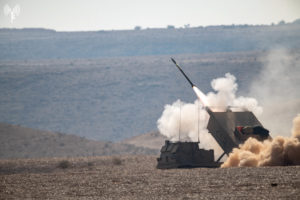
Juniper Oak is a large-scale bilateral multi-domain military exercise aimed to enhance interoperability between U.S. and Israeli armed forces contributing to integrated regional security. (Courtesy photo of the IDF Spokesperson’s Unit)
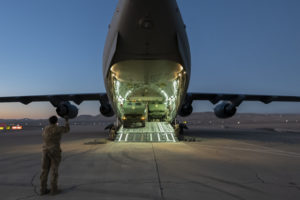
U.S. Air Force Airman 1st Class Clayton Yosten, 8th Expeditionary Airlift Squadron C-17 Globemaster III loadmaster, unloads a high mobility artillery rocket system (HIMARS) component from the aircraft in support of Exercise Juniper Oak, Nevatim, Israel, Jan. 19, 2023. Juniper Oak is a large-scale bilateral exercise, aimed to enhance interoperability between U.S. and Israeli armed forces contributing to regional security. (U.S. Air Force photo by Tech. Sgt. Daniel Asselta)
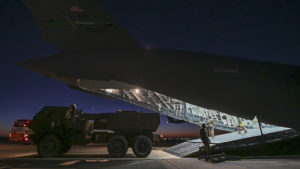
U.S. Air Force Airman 1st Class Clayton Yosten, 8th Expeditionary Airlift Squadron C-17 Globemaster III loadmaster, unloads a high mobility artillery rocket system (HIMARS) component from the aircraft in support of Exercise Juniper Oak, Nevatim, Israel, Jan. 19, 2023. Juniper Oak is a large-scale bilateral exercise, aimed to enhance interoperability between U.S. and Israeli armed forces contributing to regional security. (U.S. Air Force photo by Tech. Sgt. Daniel Asselta)
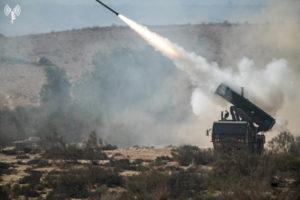
Juniper Oak is a large-scale bilateral multi-domain military exercise aimed to enhance interoperability between U.S. and Israeli armed forces contributing to integrated regional security. (Courtesy photo of the IDF Spokesperson’s Unit)
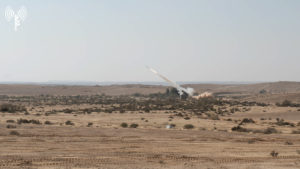
Juniper Oak is a large-scale bilateral multi-domain military exercise aimed to enhance interoperability between U.S. and Israeli armed forces contributing to integrated regional security. (Courtesy photo of the IDF Spokesperson’s Unit)
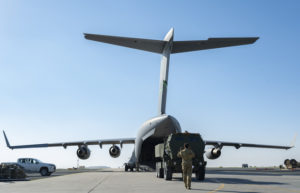
U.S. Air Force Airman 1st Class Clayton Yosten, 8th Expeditionary Airlift Squadron C-17 Globemaster III loadmaster, loads a high mobility artillery rocket system (HIMARS) component onto the aircraft in support of Exercise Juniper Oak, within the U.S. Central Command area of responsibility, Jan. 19, 2023. Juniper Oak is a large-scale bilateral exercise, aimed to enhance interoperability between U.S. and Israeli armed forces contributing to regional security. (U.S. Air Force photo by Tech. Sgt. Daniel Asselta)
As part of the expanded scope of the exercise, U.S. officials underscored the use of Space Force assets for joint command and control and reconnaissance. Juniper Oak involved CENTCOM’s newly activated SPACECENT component and included an RC-135 Rivet Joint surveillance plane.
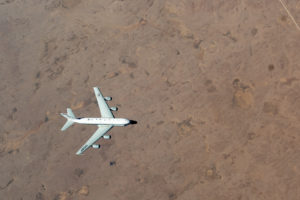
A U.S. Air Force RC-135V/W RIVET JOINT assigned to the 379th Air Expeditionary Wing departs the aerial refueling track after receiving fuel from a KC-135 Stratotanker assigned to the 91st Expeditionary Air Refueling Squadron, during Exercise Juniper Oak, within the U.S. Central Command area of responsibility, Jan. 25, 2023. Juniper Oak is a large-scale bilateral exercise, aimed to enhance interoperability between U.S. and Israeli armed forces contributing to regional security. (U.S. Air Force photo by Tech. Sgt. Daniel Asselta)
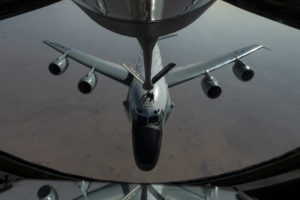
A U.S. Air Force RC-135V/W RIVET JOINT assigned to the 55th Wing, receives fuel from a KC-135 Stratotanker assigned to the 91st Expeditionary Air Refueling Squadron during an Exercise Juniper Oak mission, within the U.S. Central Command area of responsibility, Jan. 25, 2023. Juniper Oak is a large-scale bilateral exercise, aimed to enhance interoperability between U.S. and Israeli armed forces contributing to regional security. (U.S. Air Force photo by Tech. Sgt. Daniel Asselta)
Israel has previously been part of the U.S. European Command’s AOR, which reflected some Arab nations’ uneasiness working with the country. But after the Abraham Accords were signed in 2020, and given the continued threat of Iran, the U.S., Israel, and many Arab nations see a common foe.
“Most of the countries in the region look to the east when they think of the threat of Iran and its threat network,” Grynkewich told Air & Space Forces Magazine in September. Grynkenwich said at the time “there’s a lot of opportunity” to expand Israel’s role in CENTCOM, which was demonstrated by Juniper Oak.
While the U.S. military has reoriented itself towards Europe and the Pacific after 20 years of focusing on counterinsurgency operations in the Middle East, U.S. defense officials and military leaders have sought to assure allies the U.S. is still a reliable partner in the region and that if the U.S. and its allies work together more, it can make up for the smaller day-to-day presence in the Middle East.
Colin Kahl, the undersecretary of defense for policy, sought in a speech to dispel the notion that the U.S. was retrenching and cautioned Arab nations against working with Russia or China. Russia, which has a significant military presence in Syria, has been strengthening ties with Iran, from which it has acquired drones for use in Ukraine. China has been using its economic muscle to invest and build influence in the region. In December, Chinese President Xi Jinping went to Saudi Arabia and signed a strategic pact with the longtime U.S. ally.
“Over the longer term, we know that this is one of the places where strategic competition happens on a day in and day out basis,” Grynkewich said of Juniper Oak. “The Central region is central to strategic competition, whether that’s against Russia or against the Chinese.”
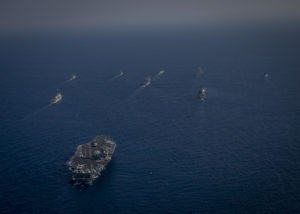
230124-N-EL850-1142 MEDITERRANEAN SEA (Jan. 24, 2023) The George H.W. Bush Carrier Strike Group sails in formation with the Israeli Navy during exercise Juniper Oak 2023-2, Jan. 24, 2023. Juniper Oak 23-2 is a bilateral military exercise, led by U.S. Central Command and the Israeli Defense Force, designed to enhance interoperability between the U.S. and Israel militaries. Juniper Oak 23-2 joins the long-standing “Juniper” series that the U.S. and Israel have conducted for more than 20-years. (U.S. Navy photo by Mass Communication Specialist 3rd Class Nicholas Avis)
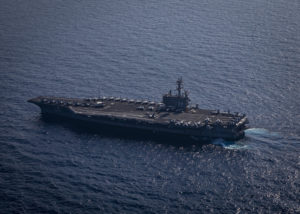
230124-N-EL850-1161 MEDITERRANEAN SEA (Jan. 24, 2023) The Nimitz-class aircraft carrier USS George H.W. Bush (CVN 77) transits the Mediterranean Sea, Jan. 24, 2023. The George H.W. Bush CSG is on a scheduled deployment in the U.S. Naval Forces Europe area of operations, employed by U.S. Sixth Fleet to defend U.S., allied and partner interests. (U.S. Navy photo by Mass Communication Specialist 3rd Class Nicholas Avis)
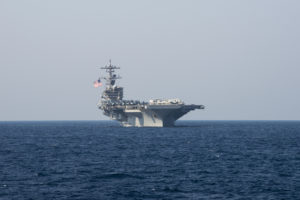
The “Juniper” series of events are designed to test collective U.S.-Israeli readiness and improve the interoperability of defense systems. These exercises offer prime opportunities for USCENTCOM and the IDF to partner and innovate together, solidifying the strategic relationship between the U.S. and Israel while contributing to regional stability. The U.S. remains committed to the security of Israel and supports Israel’s qualitative military edge. (Photo courtesy of the IDF Spokesperson’s Office)

230124-N-KL637-1332 MEDITERRANEAN SEA (Jan. 24, 2023) The George H.W. Bush Carrier Strike Group sails in formation with the Israeli Navy during exercise Juniper Oak 2023-2, Jan. 24, 2023. Juniper Oak 23-2 is a bilateral military exercise led by U.S. Central Command and the Israeli Defense Force, designed to enhance interoperability between the U.S. and Israel militaries. Juniper Oak 23-2 joins the long-standing “Juniper” series that the U.S. and Israel have conducted for more than 20-years. (U.S. Navy photo by Mass Communication Specialist 2nd Class Stuart Posada)
